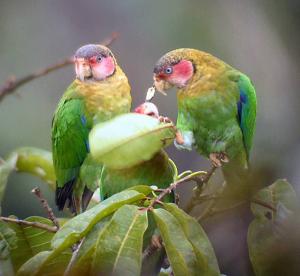Birdwatching has been taking place in Quito for over 30 years, making the Ecuadorian capital the gateway for "bird seekers"
QUITO, ECUADOR, July 14, 2022 /EINPresswire.com/ -- With species of all colors and sizes, Quito is one of the most diverse cities on the planet when it comes to birds. The variety of its ecosystem allows you to appreciate everything from condors to colorful hummingbirds.Birdwatching has been taking place in Quito for over 30 years, making the Ecuadorian capital the gateway for "bird seekers."
With more than 1,660 species, Ecuador has the highest density of bird types in the world. The forests, mountains, moors, and other ecosystems that are present in Quito invite the visitor to discover the magic of birds in an environment of exuberant nature.
Quito is home to more than 542 species, including 64 endemics to the region, among which are the Black-breasted Puffleg (Eriocnemis Nigrivestis), the Brown Wood-Rail (Aramides wolfi), and the banded Ground-Cuckoo (Neomorphus radiolosus). The emblematic Andean condor (Vultur gryphus) stands out, which, with a length of 3 meters and a weight of 12 kilos, is the largest flying bird in the world and it can be seen gliding in rural areas of Quito such as the Antisana. Another species present in this area is the Andean Cock-of-the-rock (Rupicola peruvianus), a unique bird for its unique courtship dance.
The northwest of Quito is the perfect micro destination for bird watching, located within the Choco Andino biosphere reserve, declared by UNESCO in 2018, it allows you to admire hummingbirds, parrots, toucans and quetzals; while in the southeast of Quito are the Cayambe-Coca and Antisana National Parks, which are essential places for those seeking an ecotourism and adventure tourism destination, where ideal trekking routes can be made for the practice of birdwatching.
For urban bird watching, the Botanical Garden stands out, where a great variety of migratory species can be found, and the Guangüiltagua Metropolitan Park, home of the Crimsom-mantled Woodpecker (Colaptes rivolii brevirostris).
Quito is participating at the Global Bird fair to promote the richness and biodiversity that the Capital of the Center of the World has in terms of birds. Quito Tourism will participate, from July 15 to 17, in the Global Bird Fair that will take place at the Rutland Showground, Oakham (UK). The Ecuadorian capital will exhibit its bird watching offer, which has made it one of the most important destinations in the world in the development of this activity.
About Quito Visitors' Bureau (Quito Turismo)
Quito Visitors' Bureauis the institution that facilitates and manages the development and promotion of tourism and the meeting industry of the Metropolitan District of Quito, in partnership with the tourism system and other productive sectors, for the benefit of local, national, and foreign visitors.
The capital of Ecuador is the closest to the sun and the only place where it is possible to set foot in the northern hemisphere and another in the southern hemisphere. In Quito converge the pre-Hispanic, the colonial, the traditional and the modern. Its historic center was the First Cultural Heritage of Humanity.
Besides to being the cultural and artistic center of the country, it offers exceptional gastronomy and is the gateway to the four worlds of Ecuador: Galapagos, Pacific Coast, Andes, and the Amazon.
Marisol Hernandez
Grupo Euroamerica
+1 305-300-2249
email us here
Visit us on social media:
Facebook
Twitter
Other




